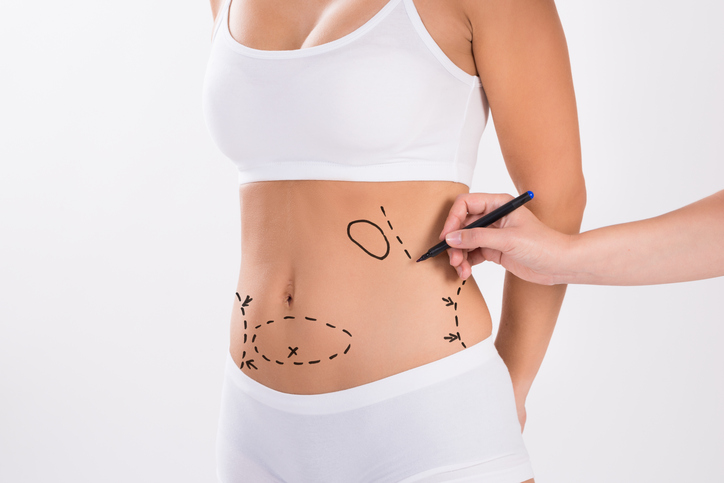
The tummy tuck is a cosmetic procedure that you can choose for the appearance and aesthetics of the abdomen—as in every surgical operation, opening the internal stitches after the tummy tuck is possible. The tummy tuck procedure is actually two-layered. The upper layer of the skin is the part where the scar is located. The inner layer is the part where the muscles are located. The surgeon stretches the abdominal muscle by separating both layers in the tummy tuck procedure. At the end of the process, the surgeon puts very effective stitches so that both layers adhere tightly.
Exercising, lifting weights, or straining after a tummy tuck can cause the inner seams to tear. Therefore, you need to pay close attention to the healing process.
Tummy Tuck and Stitches
Contents
In the tummy tuck procedure, surgeons use many different types of sutures. Almost 99% of the stitches preferred during the process are absorbable. Surgeons generally prefer absorbable sutures to bring the layers of your skin back together.
These stitches are used to reconstruct the different fascial layers. Fascia is a tough-based layer of connective tissue that typically envelops muscles and separates anatomical structures. Stitches are also preferred to flatten the abdomen.
Can Stitches Be Taken After Tummy Tuck?
In some cases, doctors may need more than one stitch for patients with skin incompatibility problem areas. In such cases, these stitches will be removed a few weeks after the procedure. Removal of these minimal types of sutures is generally simple and painless.
The surgeon removes these sutures from the drainage area. Permanent stitches don’t need to be removed. This type of suture dissolves over time and is thrown out by the body.
Tummy Tuck in Before and Afters
To see more examples of Tummy Tuck before and after photos please check our Instagram or before and after gallery.
Please click WhatsApp button or fill the form to be reached out!



What are the Symptoms of Ripped Internal Stitch After Tummy Tuck?
Some side effects or complications may occur after a tummy tuck, as with any surgical operation. For this, the body needs time to repair itself after the procedure. You can expect to stay in the hospital for a few days if side effects occur or wait a few weeks for your body to recover fully. The symptoms and possible side effects of ripped internal stitches after a tummy tuck are as follows:
- Excruciating pain at the incision
- High fever
- Infection in the incision area (in this case, pain and redness increase)
- The appearance of a large red zone in the problem area
- Leakage such as bleeding from the incision site
- Early removal of stitches and reopening of the wound
- Feeling tired and constantly sick
In some cases, the torn seam isn’t fully resolved. This situation generally occurs because a part of the future remains on the outside of the body. The fluids in the body in the problem area cannot dissolve the stitch and cannot break it up. Therefore, the stitch remains healthy. The surgeon can easily remove the remaining stitches after closing the wound.
Precautions for Internal Stitches After Tummy Tuck
- You should consider the post-operative recovery phase as an integral part of the surgery. Your full results and the success of the surgery may depend on it. That’s why it’s important to have follow-up visits to monitor proper healing and the absence of complications, usually at 7, 14, 28 days, 3, 6, and 12 months.
- Personal hygiene is essential for proper healing and avoiding surgical wound infections. Therefore, the surgeon makes correct explanations about the disinfection methods to be followed. Your operated area should not be wet for the first two weeks after the surgery.
- In the first days after the surgery, you should have a light diet until the intestinal activity returns to normal.
- It would be best if you used the abdominal elastic band. It also has the vital function of involving reshaped and stretched muscles in most plastic surgery of the abdominal wall so that they don’t stretch or stitch your muscle sutures.
- For the same reason, don’t lie on your side in the first month; you should lie down with your back slightly raised, without bending. The external compression you will get with the band also protects against uncontrollable strains such as coughing or sneezing.
- A more extended rest period is required if your job requires intense physical effort, such as lifting weights. After two weeks, you can resume driving, light housework, and sexual and social activities. It would be best if you avoided movements that force the abdominal wall. You can start lighter sports activities after three weeks, but you should wait at least three months for more intense sports.
- You can use elastic creams to apply to your abdominal area. This procedure involves more or less extensive scars. To achieve the best results in terms of quality and, therefore, the visibility of the scar, you should apply paper tapes for three months after surgery and replace them every ten days. This also minimizes your skin tension, which can cause scar enlargement. Complete sun protection is required for at least three months.
You can also read our other blog post: Losing gaining weight after brazilian butt lift surgery